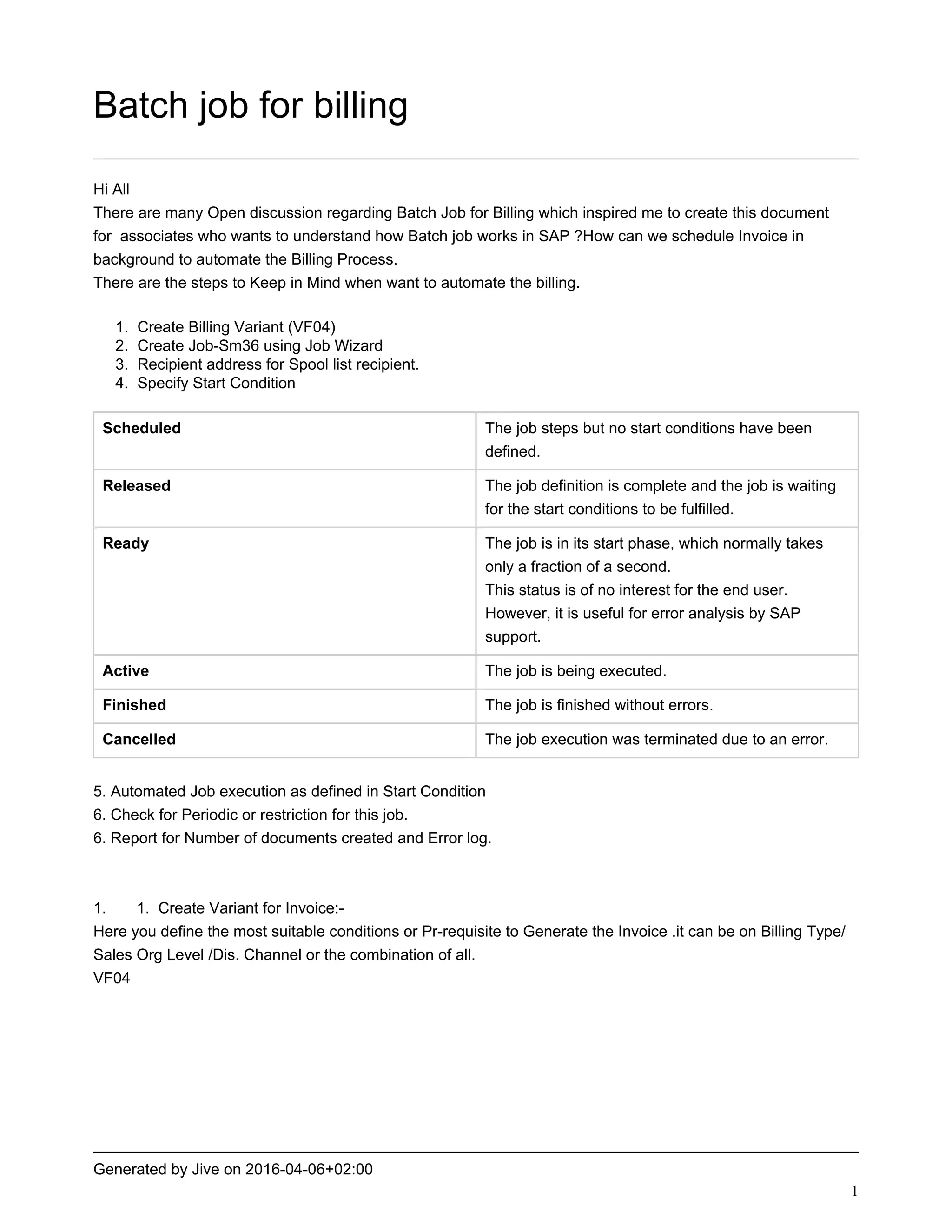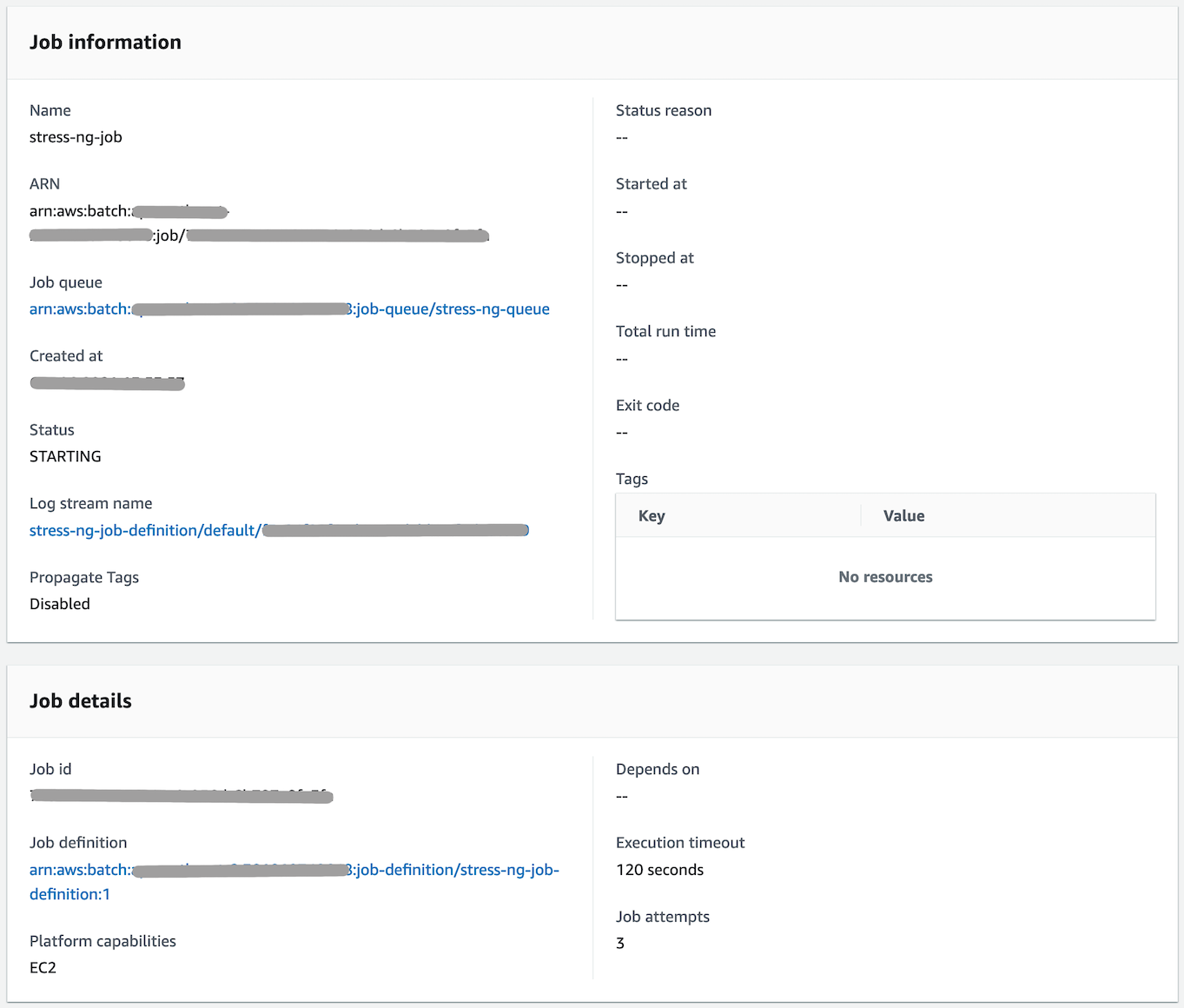Imagine this: you're managing a massive IoT network, and you're drowning in data. How do you handle it all without losing your sanity? Enter RemoteIoT batch job examples. These powerful tools are like your digital assistant, helping you process and analyze data in large chunks, saving you time and energy. In today’s fast-paced world, knowing how to leverage RemoteIoT batch jobs is not just an advantage—it's essential.
Now, before we dive into the nitty-gritty, let’s break it down. RemoteIoT batch job examples are pre-written scripts or code snippets that automate repetitive tasks. They’re like a recipe book for handling IoT data efficiently. Whether you're a developer, an IT professional, or someone curious about IoT, this guide will give you the tools you need to get started.
Why should you care? Well, the Internet of Things (IoT) is growing at an insane rate. According to a recent report by Statista, the global IoT market is projected to reach over $1.5 trillion by 2030. That’s a lot of data to process, and without the right tools, you’ll be overwhelmed. So, buckle up, because we’re about to explore the world of RemoteIoT batch job examples and how they can revolutionize your workflow.
- Vanessa James The Inspiring Journey Of A Figure Skating Legend
- Gary Allen Russell The Rising Star You Need To Know
Understanding RemoteIoT and Its Importance
First things first, let’s talk about what RemoteIoT actually is. RemoteIoT refers to the practice of managing and processing data from IoT devices remotely. Think of it as controlling a fleet of drones or sensors from the comfort of your office. It’s all about making sure your IoT devices are working seamlessly without you having to physically interact with them.
Now, why is this important? RemoteIoT allows businesses to scale their operations without sacrificing efficiency. Imagine running a smart farm with hundreds of sensors monitoring soil moisture, temperature, and humidity. Without RemoteIoT, you’d need a team of people physically checking each sensor. With RemoteIoT, you can automate the entire process, saving time and resources.
What Makes RemoteIoT Unique?
RemoteIoT stands out because of its ability to integrate with various platforms and technologies. It’s not just about managing data; it’s about creating a connected ecosystem where all your devices work together. Here are a few key features that make RemoteIoT unique:
- Tosca Musk Siblings Unveiling The Hidden Gems Of Elon Musks Family
- American Chopper Paul Teutul Jr The Man Behind The Metal
- Scalability: Whether you have 10 devices or 10,000, RemoteIoT can handle it.
- Security: With the rise of cyber threats, RemoteIoT ensures your data is protected at every step.
- Customization: You can tailor RemoteIoT solutions to fit your specific needs, whether you’re in manufacturing, healthcare, or agriculture.
What Are Batch Jobs and Why Do They Matter?
Batch jobs are like the superheroes of data processing. They’re scripts or programs that execute a series of tasks in sequence without user intervention. Think of them as a to-do list for your computer. You set it up, and it gets the job done while you focus on other things.
Batch jobs are especially important in the world of IoT because they allow you to process large volumes of data efficiently. Instead of manually analyzing each piece of data, you can set up a batch job to do it for you. This not only saves time but also reduces the risk of human error.
Benefits of Using Batch Jobs in IoT
Here’s why batch jobs are a game-changer for IoT:
- Automation: Automating repetitive tasks frees up your time for more strategic work.
- Efficiency: Batch jobs can process data faster than a human ever could.
- Consistency: With batch jobs, you can ensure that your data is processed in the same way every time.
RemoteIoT Batch Job Example: A Step-by-Step Guide
Now that you understand the basics, let’s dive into a real-world example of a RemoteIoT batch job. We’ll walk you through the process step by step so you can see how it works in practice.
Step 1: Setting Up Your Environment
Before you can start creating batch jobs, you need to set up your environment. This involves installing the necessary software and configuring your IoT devices. Don’t worry if you’re not a tech wizard—most platforms come with user-friendly interfaces that make setup a breeze.
Step 2: Writing Your First Batch Job
Once your environment is ready, it’s time to write your first batch job. Here’s a simple example using Python:
# This script collects data from IoT devices and saves it to a file
import requests
import json
def collect_data():
url ="https://your-iot-api.com/data"
response = requests.get(url)
data = response.json()
with open("data.json", "w") as file:
json.dump(data, file)
collect_data()
See how easy that was? This script connects to your IoT API, retrieves data, and saves it to a file. You can schedule this script to run at regular intervals using a cron job or a similar tool.
Best Practices for RemoteIoT Batch Jobs
While batch jobs are powerful, there are a few best practices you should follow to get the most out of them:
- Test Your Scripts: Always test your batch jobs in a safe environment before deploying them to production.
- Monitor Performance: Keep an eye on how your batch jobs are performing and make adjustments as needed.
- Document Your Work: Documenting your scripts and processes will make it easier for others to understand and maintain them.
Common Challenges and How to Overcome Them
Of course, like any technology, RemoteIoT batch jobs come with their own set of challenges. Here are a few common issues and how to overcome them:
Challenge 1: Data Overload
With so much data coming in, it’s easy to get overwhelmed. To manage this, consider using data filtering techniques to focus on the most important information.
Challenge 2: Security Concerns
IoT devices are prime targets for cyber attacks. To protect your data, use encryption and secure authentication methods.
Real-World Applications of RemoteIoT Batch Jobs
Let’s take a look at some real-world examples of how RemoteIoT batch jobs are being used today:
Example 1: Smart Cities
Smart cities use IoT devices to monitor traffic, air quality, and energy consumption. Batch jobs help process this data in real-time, allowing city planners to make informed decisions.
Example 2: Healthcare
In healthcare, IoT devices are used to monitor patients’ vital signs. Batch jobs can analyze this data to detect early signs of health issues, improving patient outcomes.
Future Trends in RemoteIoT Batch Jobs
As technology continues to evolve, so does the world of RemoteIoT batch jobs. Here are a few trends to watch out for:
- Edge Computing: Processing data closer to the source will become more common, reducing latency and improving efficiency.
- AI Integration: Artificial intelligence will play a bigger role in analyzing IoT data, providing deeper insights.
Conclusion: Take Action Today
In conclusion, RemoteIoT batch job examples are a powerful tool for anyone working with IoT data. They save time, improve efficiency, and reduce errors. Whether you’re a seasoned professional or just starting out, mastering batch jobs will give you a competitive edge.
So, what are you waiting for? Start exploring RemoteIoT batch job examples today. And don’t forget to share your thoughts in the comments below. Together, we can build a smarter, more connected world.
Table of Contents
- Understanding RemoteIoT and Its Importance
- What Are Batch Jobs and Why Do They Matter?
- RemoteIoT Batch Job Example: A Step-by-Step Guide
- Best Practices for RemoteIoT Batch Jobs
- Common Challenges and How to Overcome Them
- Real-World Applications of RemoteIoT Batch Jobs
- Future Trends in RemoteIoT Batch Jobs
- Conclusion: Take Action Today
- Tiffany And Taylor Dayne The Iconic Journey Of Two Pop Legends
- What Happened To Quiznos The Untold Story Behind The Sub Shops Rise And Fall


